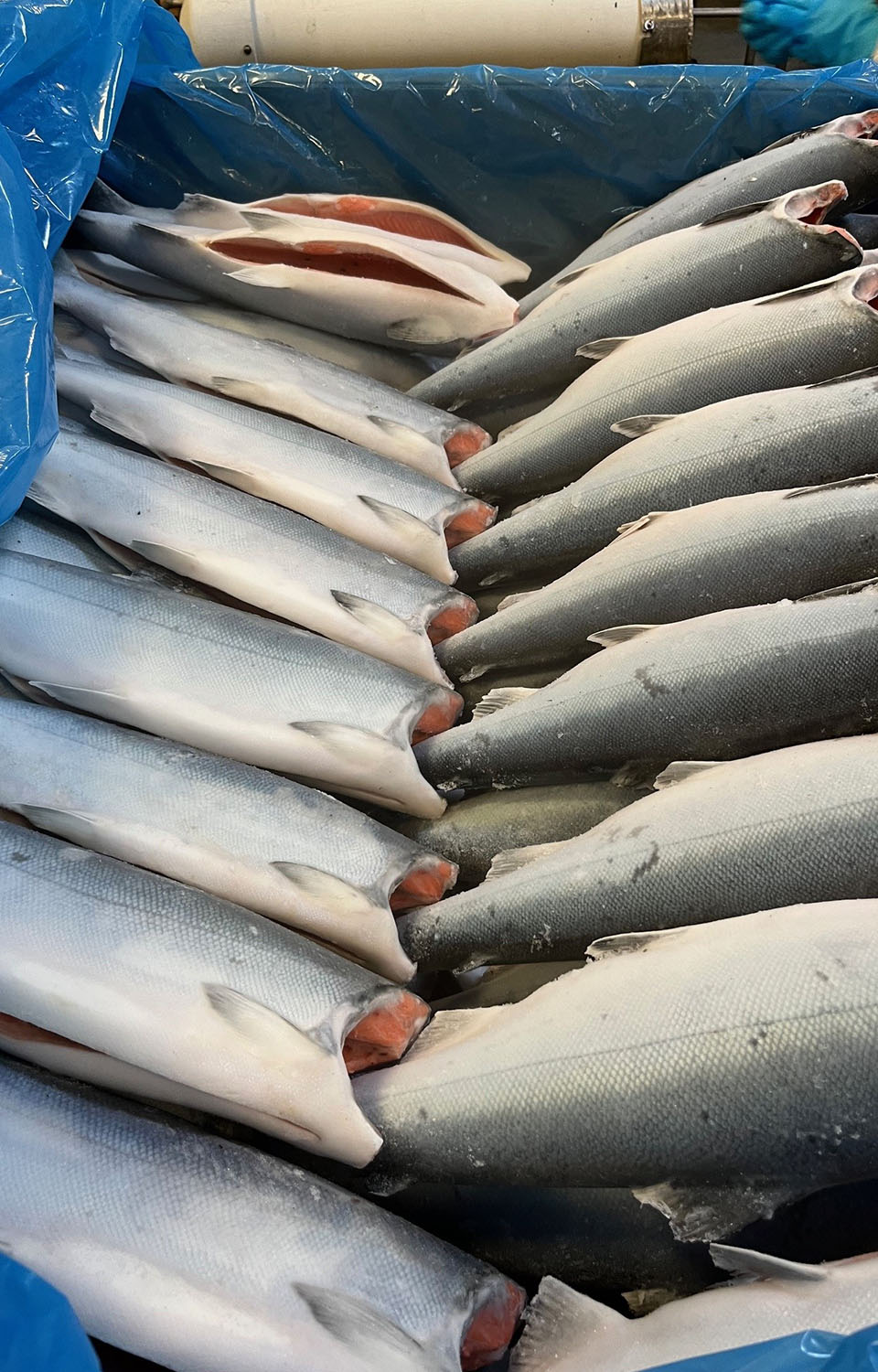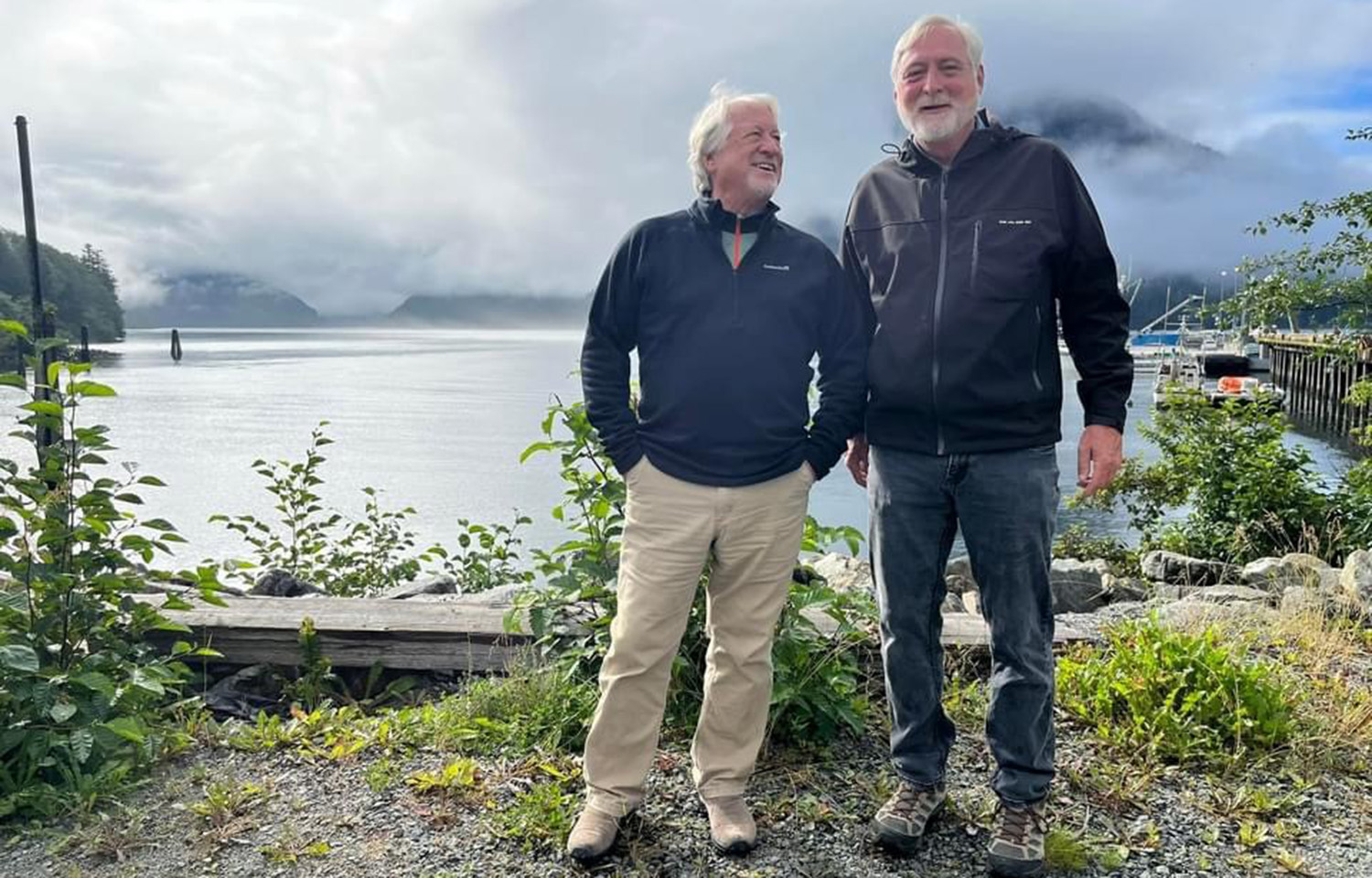Mark Tupper, along with his wife, Beth Tupper, are the co-owners of Vancouver, Washington, U.S.A.-based Triad Fisheries. They announced the sale of the company to Juneau, Alaska, U.S.A.-based Alaska Glacier Seafoods on 5 August.
SeafoodSource: What is the story of Triad Fisheries and your involvement in the company?
Tupper: Bruce Gore was a salmon fishermen in Alaska in the 1970s, and he put a freezer on the boat. Bruce's wife, Kathy, and the boat made a triad, so they named the company Triad Fisheries. Bruce would clean the fish really well and freeze it, and his big idea was to freeze it pre-rigor to at least minus-20 to minus-30 degrees, where it actually froze solid. So, he was one of the originators of super-freezing salmon.
Bruce would use a spatula to get all the blood out of the belly veins of the fish. There was a young man who was going to medical school fishing in Alaska at the time, and he taught Bruce how to use a medical catheter to drain all the blood out of the fish. He would take the head off the fish, tap into the aorta at the top of the nape, and then make an incision right behind the anal cavity of the fish into the backbone. That just forces all the blood out of the veins and gives you an absolutely bloodless carcass. This all happens in the first five minutes after the fish is caught. Then, any sea lice on the outside of the fish is removed, and the fish goes below deck, gets placed on aluminum trays in front of the evaporator, and laid down and spread so it's nice and straight. The bellies are wide open, and you can just look inside there and see this beautiful fish.
In 1980, Julia Child came to Seattle, doing her "French Chef" TV series, and everybody there told her to meet up with Bruce because she wanted to do a show about salmon. So, she talked to Bruce, and when she saw his fish, she couldn't believe the quality. His fish was the only product she ever called out by brand. She said, “If you can get yourself a Bruce Gore salmon, you'd be well-off.”
After that, Bruce’s business took off, and he was able to grow his fleet to eight boats – all following his process. When Beth and I bought the business in 2008, Bruce was 68. He wanted to get out of the business, and I had shown interest. So, we bought the business from him, and we took it up to 16 boats in our heyday. But, we’ve pared it back over the years as we've gotten older. My wife doesn't want to work that much anymore. When we decided it was time to retire, we began looking for a buyer and eventually found Alaska Glacier.
SeafoodSource: What's your background? You said you felt confident selling any kind of fish. Did you do that before you bought the business?
Tupper: I started out at Port Chatham [Smoked Seafood] when I was 17 years old, which at the time was owned by two Norwegian brothers, though it's owned by Trident now …That was my introduction. Then, I worked for Icicle Seafoods running a big processing barge in Bristol Bay. I'll never forget going to Bristol Bay. The first couple days in late June, we'd have runs of the sockeye coming in like little bullets and green from the fresh water, but they still were really nice-looking fish. By day four of the run, all our fish were crap. They were all dishrags.
There was just no sort of standard in the state of Alaska. That was a real driver for me to get involved with Bruce because he cared about standards and quality. Eventually, I ended up at Orca Bay doing processing. When they had a sales job open up, I jumped at that opportunity. Another guy helped me out because I was so new at the whole thing, and he set me up selling lines of 12-ounce and 6-ounce portions; by the luck and grace of God, I was able to sell those really well and built up quite a business selling across America. That gave me a lot of connections that helped when we eventually took over Triad.
SeafoodSource: How did you get to know Alaska Glacier?
Tupper: Alaska Glacier also does a lot of troll-ice fish, and they do a little bit of frozen-at-sea. The business is really unique. We don't pay our fishermen upfront. We don't give our fishermen any prices. When I bought the business from Bruce, I actually had to go out and meet these fishermen, and they had to assess whether they were going to give their fish to me because there's nothing in writing. It is all done with a handshake and a lot of pride and trust. We start paying them usually in September so they're all self-sufficient, and we maybe send them USD 5,000 to USD 10,000 (EUR 4,500 to EUR 9,000) per month until we have them paid off. But, we really don't set the price up until February or March, when we’ve sold the entire pack and know exactly what the take is and how much we can give the fishermen. But, we've always managed to give them better money than just about anybody else.
When I bought the business from Bruce, I told him, “I can market fish. I can sell fish anywhere to anybody, especially this fish that's such a great story, and unsurpassed quality. But, I don't want to deal with these fishermen.” He assured me I wouldn’t have to, saying “They're just going to give you the fish. They're going to trust you, you're going to sell it, and you're going to give them as much money as you possibly can while still staying in business.” So, that's the way we've always done it, and the reason we chose to work with Alaska Glacier is that they've always treated their fishermen really well. They've got a really good reputation among all the boats. My boats, when they heard that we were going to make this move, were just really thrilled. Besides being family-owned and having a great reputation, they tend to set their own prices rather than following others in a way that treats their fishermen fairly.
SeafoodSource: So, you think your fishermen are in good hands?
Tupper: I know they are because they have a choice about who they sell to, and we've already got boats signed up and fishing for them. I got a call yesterday from another guy who fished for us two years ago and said he wants to start delivering to him; more are coming over as we speak. They’re really excited to work with those guys up there. I think we found the right group, and that was really what was holding us back from not selling earlier. It was just great to find the right people.
SeafoodSource: Where and when do your boats fish?
Tupper: They all fish in Southeast Alaska. The troll fishery goes from Prince of Wales Island right at the Canadian border up to Yakutat. Usually, the first king opener is in July, and we’ll be up on what we call the grounds in the open ocean in the Gulf of Alaska off Yakutat. For the second king opener, they're usually down south near Prince of Wales Island. We also fish south of Baranof Island, and we’ve been getting a fair amount down in that area, just off the coast down there.
SeafoodSource: How does the fish get from the boats to markets?
Tupper: We basically get a finished product from our fishermen, who fish anywhere from 20 to 50 miles offshore these days due to warmer water temperatures. Out there, we’re getting that fish just as it's schooling up, so their bellies are really thick and there's hardly any eggs; the fish is absolutely clean. They’re still actively feeding and caught just at their zenith. We've done tests on our coho and find that they have more omega-3s than a Copper River sockeye that's going to go up a 1,000-mile river. Our fish is all hook-and-line caught.

We have a contract with Sitka Salmon Seafoods, and they have done a beautiful job. The boats come in, Sitka Salmon packs the fish into totes, and we send it down to Commercial Cold Storage in Mount Vernon, Washington. Then, we grade it and bag it, and we tag each fish. Bruce Gore was the first person to tag fish back in 1978, individually placing a tag on each fish listing, which includes which boat caught it and where it was from. It was the very first traceability program for salmon, and a lot of people picked up on that; we still do it today. If you call, we can give you a picture of the boat, the people on it, and the date and location where each fish was caught. A side benefit of the tagging is that it keeps our fishermen adhering to our rules and the way we want them to deliver quality fish.
SeafoodSource: Who's buying these fish, who's giving you the premium, and where are you selling them?
Tupper: We sell to a lot of restaurants, and we were selling to ...








